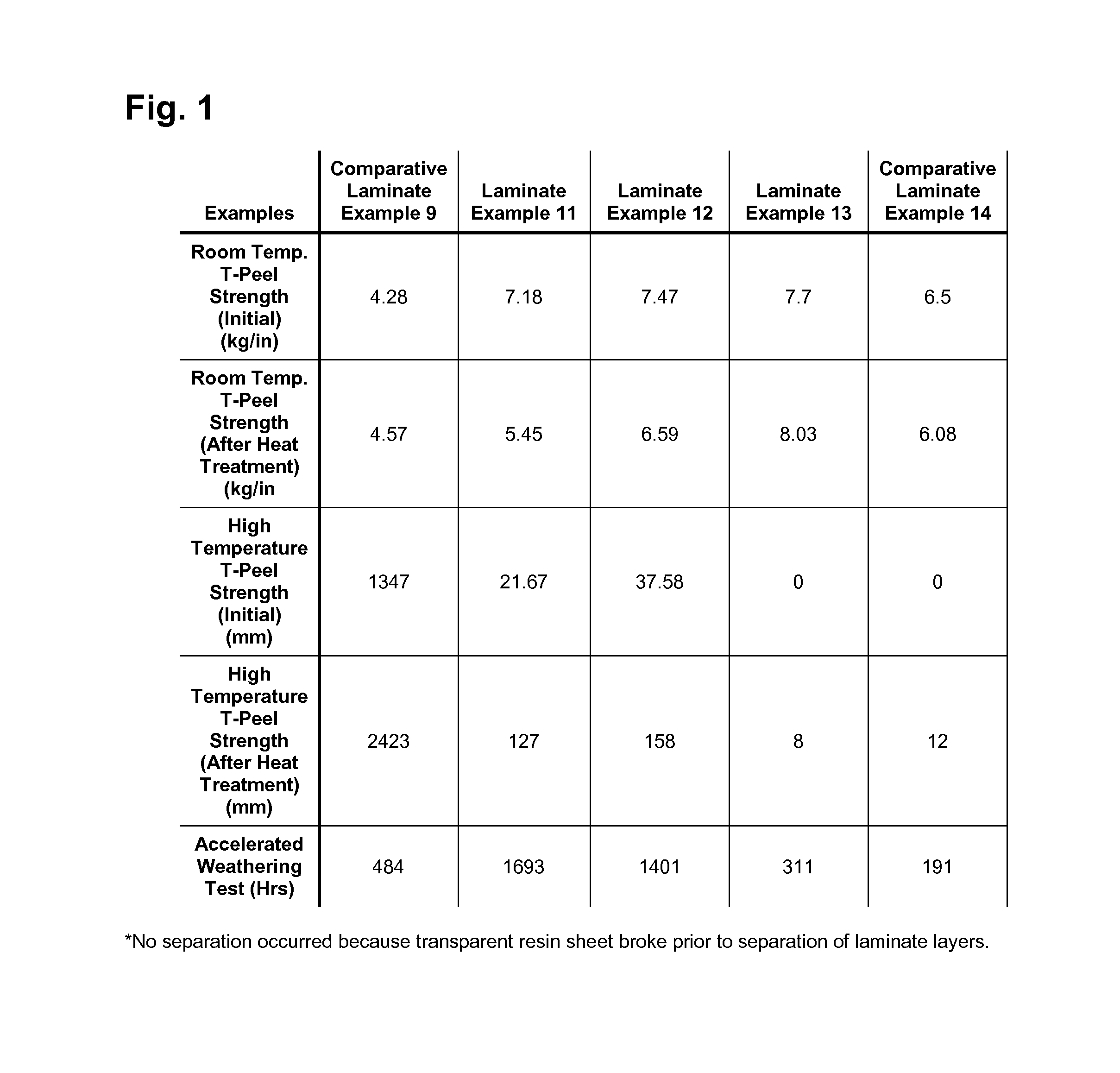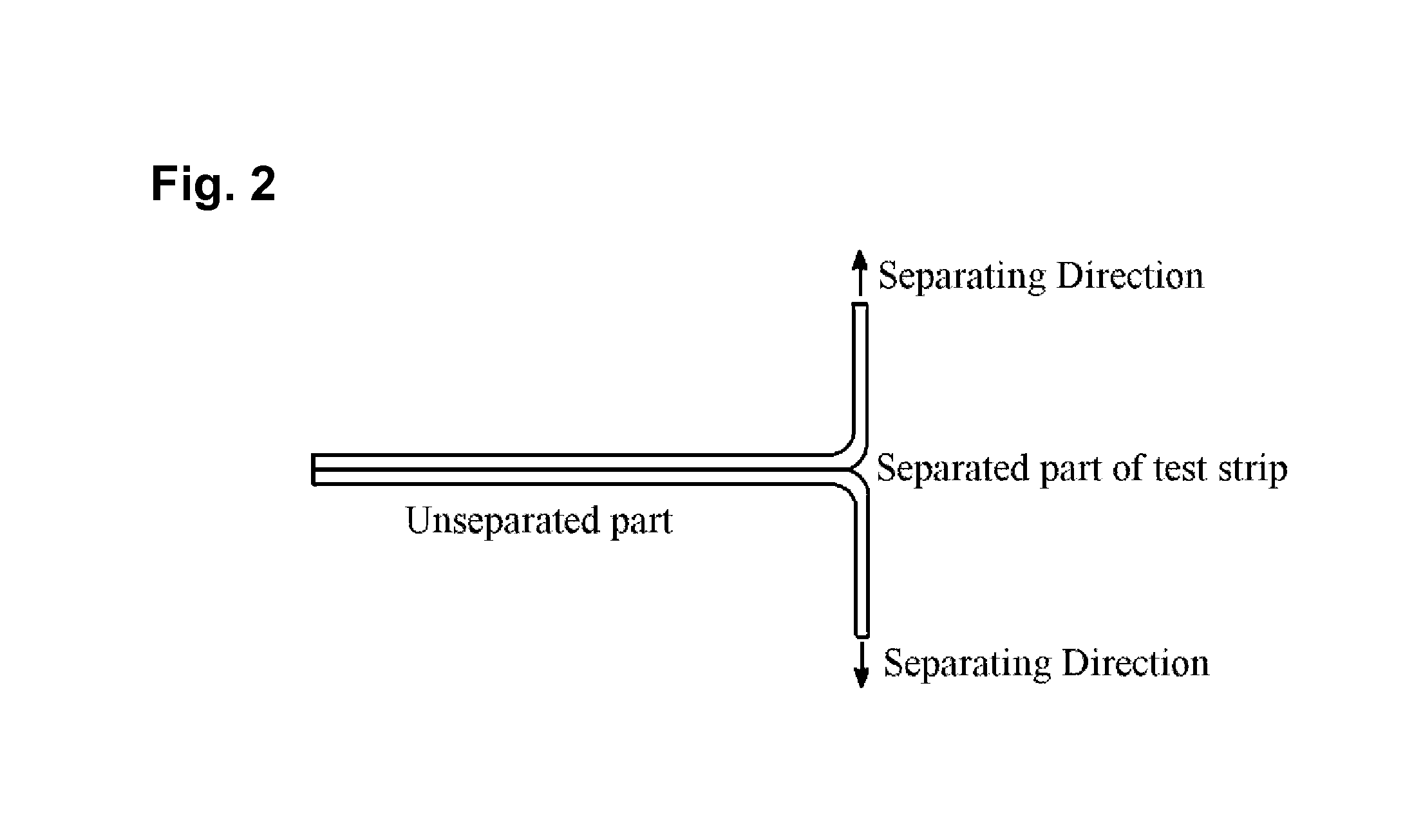Photochromic polyurethane laminate
a polyurethane and photochromic technology, applied in the field of photochromic laminates, can solve the problems of affecting the desired surface smoothness, the inability to apply photochromic dyes on the surface of ophthalmic sunglass lenses with relatively thick coatings, and the inability to achieve segmented application of photochromic dyes on the surface of multi-focal lenses, etc., to achieve enhanced network structure of photochromic polyurethane laminates, improve the adhesion
- Summary
- Abstract
- Description
- Claims
- Application Information
AI Technical Summary
Benefits of technology
Problems solved by technology
Method used
Image
Examples
synthesis example 1
Synthesis of Hydroxyl-Terminated Polyurethane Resin Solution
[0086]A one gallon stainless steel can was charged with 744.85 grams (0.7555 equivalents) of a polycarbonate diol having an OH number of 56.9 milligrams KOH per gram and a number average molecular weight of about 2000 grams per mole (available from Asahi Kasei as T5652). Tetrahydrofuran (THF 1150.5 grams) was then add to dissolve the diol, followed by adding 199.9 grams (1.511 equivalents) of 4,4′-dicyclohexylmethanediisocyanate (H12MDI, available from Bayer as Desmodur W) into the reactor at ambient temperature. The mixture was stirred until homogenous. Dibutyltin dilaurate catalyst (4.73 grams, available from Air Products as T-12 and diluted into 5 percent solution with THF) was added to the mixture to initiate the reaction. The mixture was shaken in a paint shaker for approximately five minutes. The stainless steel can container was purged with nitrogen, sealed and aged at room conditions for four days.
[0087]To the above...
synthesis example 2
Synthesis of Isocyanate-Terminated Prepolymer Solution
[0089]A one gallon glass bottle was charged with 1121.59 grams (0.2821 equivalents) of a polycarbonate diol having an OH number of 141.1 milligrams KOH per gram and a number average molecular weight of about 800 grams per mole (available from Asahi Kasei as G3450J). Tetrahydrofuran (THF, 616.09 grams) was then added to dissolve the diol, followed by adding 752.94 grams (0.5691 equivalents) of 4,4′-dicyclohexylmethanediisocyanate (H12MDI, available from Bayer as Desmodur W) into the container at ambient temperature. The mixture was stirred until homogenous. Dibutyltin dilaurate catalyst (9.38 grams, available from Air Products as T-12 and diluted into five percent solution with THF) was added to the mixture to initiate the reaction. The mixture was stirred for about five minutes. The container was purged with nitrogen, sealed and aged at room conditions for four days.
synthesis example 3
Synthesis of Isocyanate-Terminated Prepolymer Solution
[0090]A one gallon glass bottle was charged with 892.12 grams (0.2275 equivalents) of a polycarbonate diol having an OH number of 143.1 milligrams KOH per gram and a number average molecular weight of about 800 grams per mole (available from Asahi Kasei as T5650J). Tetrahydrofuran (THF, 492.88 grams) was then added to dissolve the diol, followed by adding 607.50 grams (0.4591 equivalents) of 4,4′-dicyclohexylmethanediisocyanate (H12MDI, available from Bayer as Desmodur W) into the container at ambient temperature. The mixture was stirred until homogenous. Dibutyltin dilaurate catalyst (7.50 grams, available from Air Products as T-12 and diluted into five percent solution with THF) was added to the mixture to initiate the reaction. The mixture was stirred for about five minutes. The container was purged with nitrogen, sealed and aged at room conditions for four days.
PUM
| Property | Measurement | Unit |
|---|---|---|
| molecular weight | aaaaa | aaaaa |
| temperature | aaaaa | aaaaa |
| molecular weight | aaaaa | aaaaa |
Abstract
Description
Claims
Application Information
 Login to View More
Login to View More - R&D
- Intellectual Property
- Life Sciences
- Materials
- Tech Scout
- Unparalleled Data Quality
- Higher Quality Content
- 60% Fewer Hallucinations
Browse by: Latest US Patents, China's latest patents, Technical Efficacy Thesaurus, Application Domain, Technology Topic, Popular Technical Reports.
© 2025 PatSnap. All rights reserved.Legal|Privacy policy|Modern Slavery Act Transparency Statement|Sitemap|About US| Contact US: help@patsnap.com



